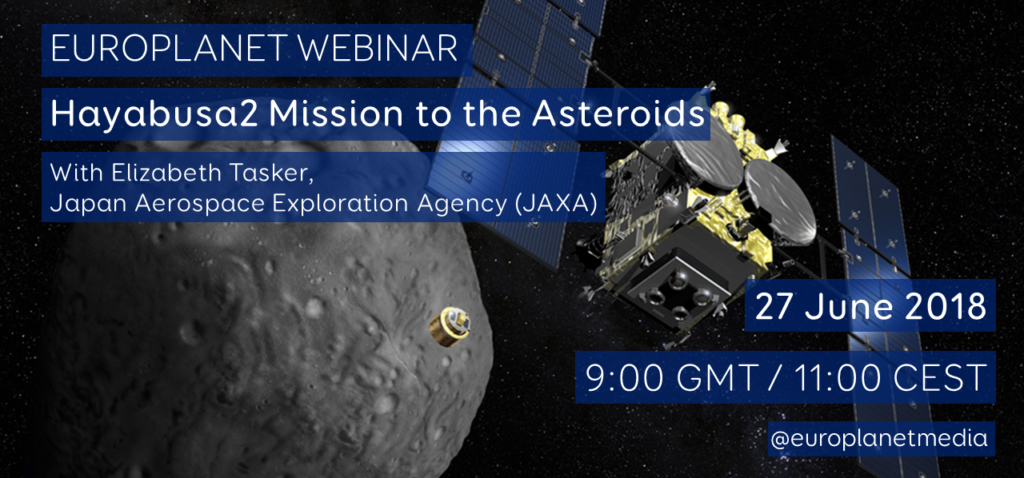How do you send a spacecraft to an asteroid thousands of miles kilometres away and return to Earth with some samples? This month on the webinar we discuss this unprecedented mission with Dr. Elizabeth Tasker from the Japan Aerospace Exploration Agency (JAXA). Join on Wednesday, 27 June 2018 at 09:00 GMT / 11:00 CEST. Register and send your questions: https://goo.gl/forms/zcE7muAVoxEHk4Vo1
Hayabusa2 is a space mission led by the Japan Aerospace Exploration Agency (JAXA) to visit an asteroid and return a sample to Earth. The spacecraft launched in 2014 but is now rapidly approaching asteroid Ryugu. Ryugu is a C-type asteroid, meaning that it formed in the early days of the Solar System and has changed very little during that time. This makes the space rock kin to meteorites that rained down on the young Earth, possibly bringing water and the first organics to our planet. Hayabusa2 will arrive at Ryugu at the end of June (!) and will analyse the asteroid remotely, take three samples and drop a lander and three small rovers to the asteroid surface. It is due to return to Earth in 2020. While led by JAXA, there is strong European involvement in the mission, with the lander (MASCOT) being designed and built by the German and French space agencies, the same team that designed the Philae lander on the Rosetta mission.

Elizabeth Tasker is an associate professor and science communicator at the Japan Aerospace Exploration Agency (JAXA), Institute of Space and Astronautical Sciences (ISAS). Her research focusses on the formation of stars and exoplanets. She is part of the Hayabusa2 outreach team, and also keeps a blog on ISAS activities as well as writing for the NASA NExSS planetary blog site, “Many Worlds”.

